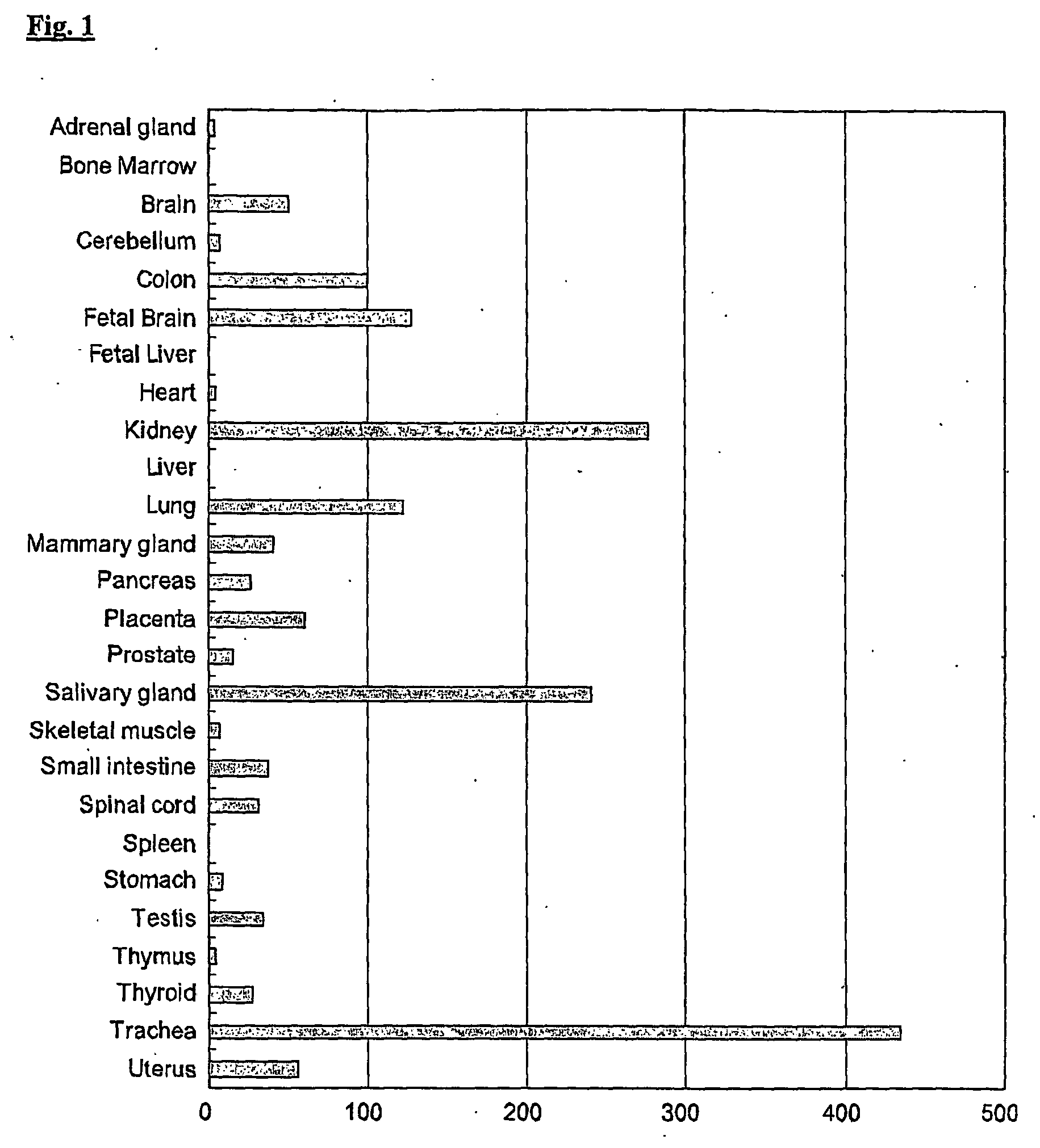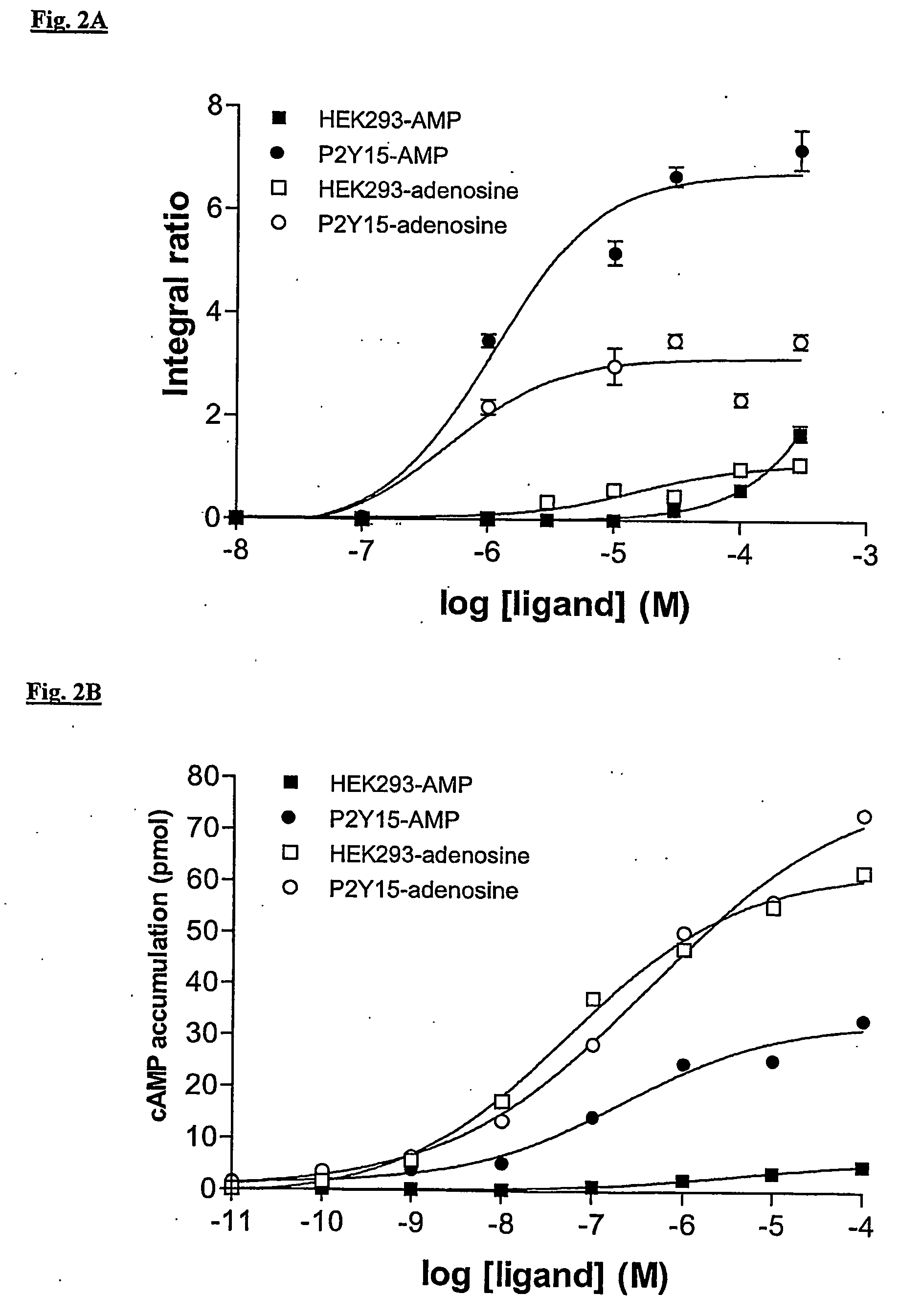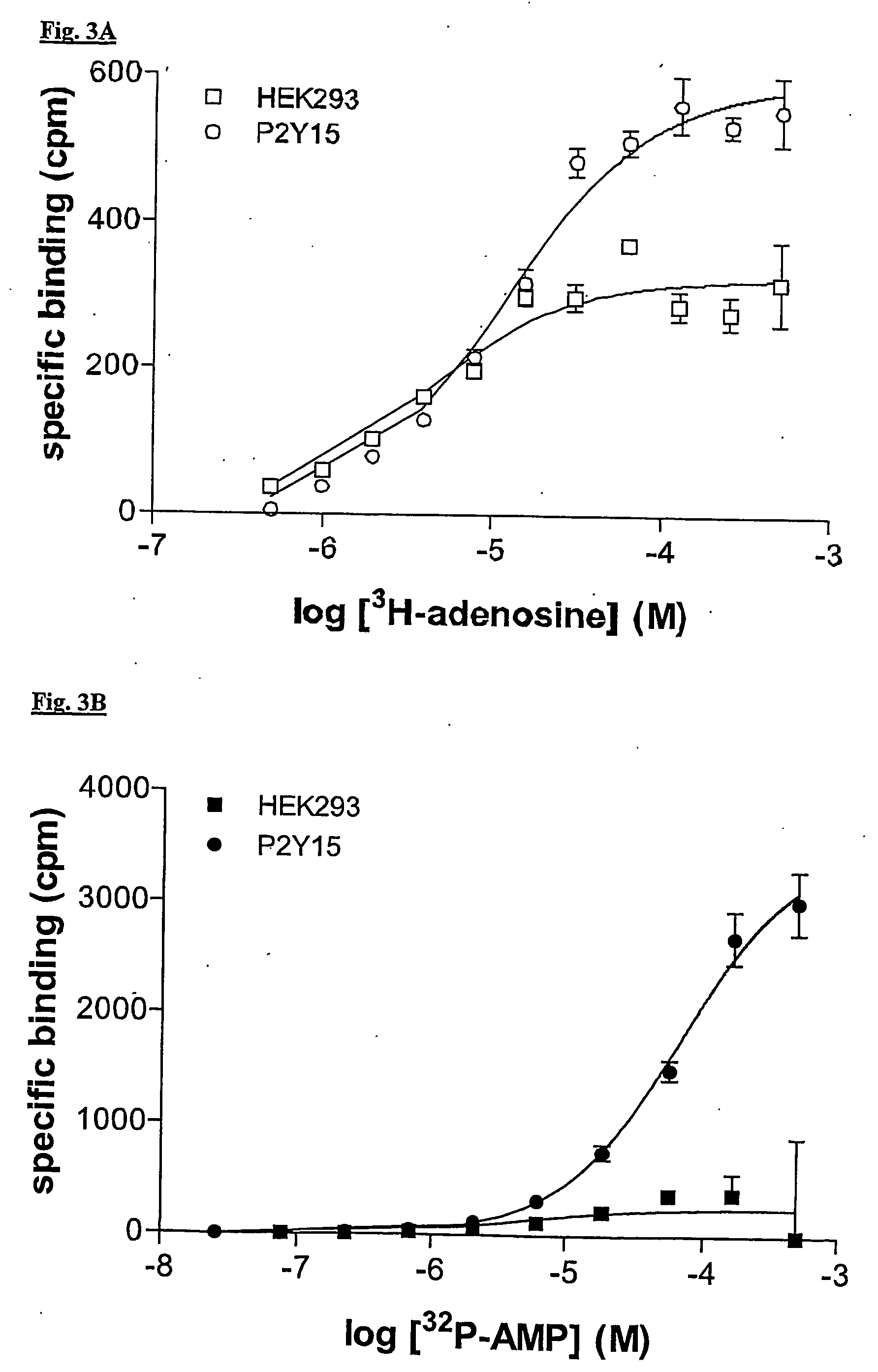Regulation of human p2y15 g protein-coupled receptor
- Summary
- Abstract
- Description
- Claims
- Application Information
AI Technical Summary
Benefits of technology
Problems solved by technology
Method used
Image
Examples
example 1
Detection of P2Y15 GPCR Activity
[0204] The polynucleotide of SEQ ID NO: 1, 3, or 5 is inserted into the expression vector pCEV4 and the expression vector pCEV4-P2Y15 GPCR polypeptide obtained is transfected into human embryonic kidney 293 cells. These cells are scraped from a culture flask into 5 ml of Tris HCl, 5 mM EDTA, pH 7.5, and lysed by sonication. Cell lysates are centrifuged at 1000 rpm for 5 minutes at 4° C. The supernatant is centrifuged at 30,000×g for 20 minutes at 4° C. The pellet is suspended in binding buffer containing 50 mM Tris HCl, 5 mM MgSO4, 1 mM EDTA, 100 mM NaCl, pH 7.5, supplemented with 0.1% BSA, 2 μg / ml aprotinin, 0.5 mg / ml leupeptin, and 10 μg / ml phosphoramidon. Optimal membrane suspension dilutions, defined as the protein concentration required to bind less than 10% of the added radioligand, are added to 96-well polypropylene microtiter plates containing 125I-labeled ligand or test compound, non-labeled peptides, and binding buffer to a final volume of...
example 2
Expression of Recombinant Human P2Y15 GPCR
[0208] The Pichia pastoris expression vector pPICZB (Invitrogen, San Diego, Calif.) is used to produce large quantities of a human P2Y15′ GPCR polypeptides in yeast. The human P2Y15 GPCR polypeptide-encoding DNA sequence is derived from the nucleotide sequence shown in SEQ ID NO:1. Before insertion into vector pPICZB the DNA sequence is modified by well known methods in such a way that it contains at its 5′-end an initiation codon and at its 3′-end an enterokinase cleavage site, a His6 reporter tag and a termination codon. Moreover, at both termini recognition sequences for restriction endonucleases are added and after digestion of the multiple cloning site of pPICZ B with the corresponding restriction enzymes the modified polypeptide encoding DNA sequence is ligated into pPICZB. This expression vector is designed for inducible expression in Pichia pastoris, expression is driven by a yeast promoter. The resulting pPICZ / md-His6 vector is us...
example 3
Radioligand Binding Assays
[0210] Human embryonic kidney 293 cells transfected with a polynucleotide which expresses human P2Y15 GPCR are scraped from a culture flask into 5 ml of Tris HCl, 5 mM EDTA, pH 7.5, and lysed by sonication. Cell lysates are centrifuged at 1000 rpm for 5 minutes at 4° C. The supernatant is centrifuged at 30,000×g for 20 minutes at 4° C. The pellet is suspended in binding buffer containing 50 mM Tris HCl, 5 mM MgSO4, 1 mM EDTA, 100 mM NaCl, pH 7.5, supplemented with 0.1% BSA, 2 μg / ml aprotinin, 0.5 mg / ml leupeptin, and 10 μg / ml phosphoramidon. Optimal membrane suspension dilutions, defined as the protein concentration required to bind less than 10% of the added radioligand, are added to 96-well polypropylene microtiter plates containing 125I-labeled ligand or test compound, non-labeled peptides, and binding buffer to a final volume of 250 μl.
[0211] In equilibrium saturation binding assays, membrane preparations are incubated in the presence of increasing c...
PUM
| Property | Measurement | Unit |
|---|---|---|
| Concentration | aaaaa | aaaaa |
| Resonance energy | aaaaa | aaaaa |
| Fluorescence | aaaaa | aaaaa |
Abstract
Description
Claims
Application Information
 Login to View More
Login to View More - R&D
- Intellectual Property
- Life Sciences
- Materials
- Tech Scout
- Unparalleled Data Quality
- Higher Quality Content
- 60% Fewer Hallucinations
Browse by: Latest US Patents, China's latest patents, Technical Efficacy Thesaurus, Application Domain, Technology Topic, Popular Technical Reports.
© 2025 PatSnap. All rights reserved.Legal|Privacy policy|Modern Slavery Act Transparency Statement|Sitemap|About US| Contact US: help@patsnap.com



